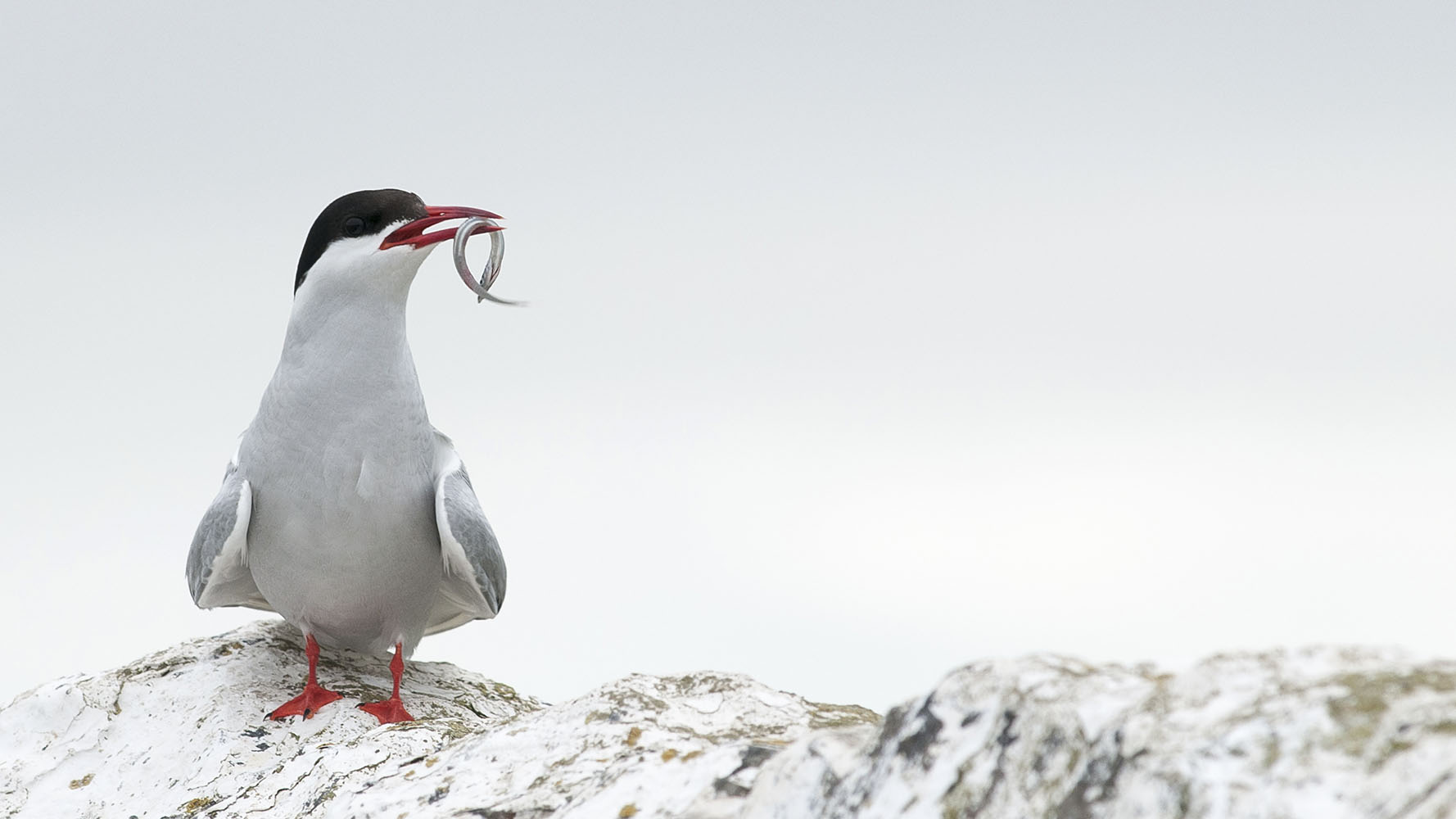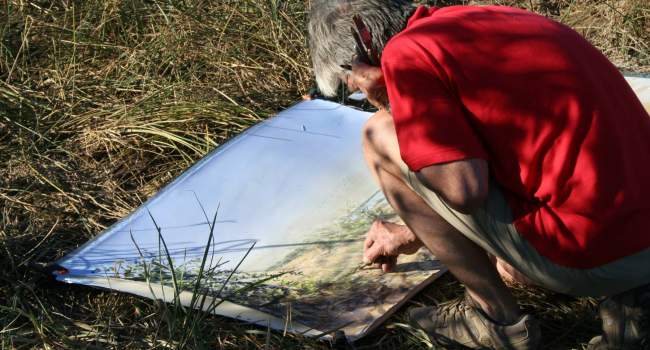
Migration blog (30th April – 6th May)
Be the first to commentAnother week dominated by cool weather was interjected by a spell of lighter winds at the start of the week that provided a scattering of common and scarce migrants, mainly along the south coast.
For many, the highlight of the past week was the arrival of the first Swifts, Lesser Whitethroats, Nightingales and Spotted Flycatchers of the year. The reporting rates of all three species is a little behind where they should be for the time of year, something to be expected given the colder conditions but hopefully this will only delay breeding by a few days and, if we have a good summer, breeding success won’t be affected too much. One species that has been affected by the colder spring is House Martin, the BirdTrack reporting rate is well below where it should be for the time of year and even took a dip during the last week as fewer reports came in. The picture is similar across the rest of Europe with reports below the expected range for the time of year and birds much further south than where they should be. The EuroBirdPortal map, which includes BirdTrack data, shows this year's counts per week compared to the same week last year – the difference in the last couple of weeks is startling.

Those early summer migrants such as Chiffchaff will already be on eggs and Whitethroats, Blackcaps, and Willow Warblers won’t be far behind. Remember that you can add breeding evidence to records you submit via BirdTrack and these can be extremely useful to county recorders. Surveys such as Breeding Bird Survey (BBS) will be able to show the impact of this colder spring on the success of other species – fingers crossed we have a good summer. Another species that continued to be reported in numbers across Britain and Ireland in the last week was Bar-tailed Godwit. Severn Beach in Gloucestershire recorded an flock of 1,806 on the 26th April, whilst several other sites also recorded good double and triple figure counts during the week, and with many in their brick red breeding plumage they brought a splash of colour to many a birdwatcher's day. Whimbrels were also well reported and again some sites recorded high double figure and triple figure counts, with 200 reported from Ardmore Point in Northern Ireland, and they could sometimes be found associating with their Godwit cousins.
The beginning to middle of last week also saw an increase in reports of Arctic Tern as this true wonder of migration headed north across Britain and Ireland to breeding locations here and further north. Some flocks also included Common Tern, Little Gulls, and the odd Black Tern and were often found at inland waters as they paused to feed or to rest. A flock of 70 Arctic Terns at Stewartby Lake, Bedfordshire, was the highest inland count but several other sites recorded double figure counts.
Sunday into Monday saw the first real arrival of Swifts with odd birds reported from several locations. However, as with House Martins the number of birds involved is well below where it should be for the time of year and the story is the same across much of Europe. The next couple of weeks is when their arrival will really ramp up so it will be interesting to see how many arrive during the next review period.
The easterly winds at start of the week resulted in a flurry of scarcer species, with Woodchat Shrike, Purple Heron, Red-rumped Swallow, Golden Oriole, Serin, Black Stork, Black-winged Stilt, and Eastern Subalpine Warbler all reported, mainly along the south coast. The star bird however was a female Rock Thrush which was found on the Isles of Scilly on Monday afternoon, though it wasn’t seen the next day.

Species Focus — Tree Pipit
Tree Pipit is one of three species of pipit that breeds in Britain. During the breeding season it is found right across the mainland from south to north but not in Ireland, the Outer Hebrides and the Northern Isles; it is encountered as a passage migrant in the latter locations in both spring and autumn though.
Tree Pipits can begin arriving in Britain in late March but they peak in late April to early May and around 105,000 pairs are estimated to breed here. However, Tree Pipit is one of a suite of long-distance migrants that have seen alarming declines in the breeding population; down by 69% between 1993 and 2018 and red listed as a bird in need of conservation action as a result.
It is unclear where British Tree Pipits spend the winter months but what is known is that they are found in Sub-Saharan Africa from Guinea in the west to Ethiopia in the east and south to South Africa. As the breeding range extends from Britain, across Europe and east across Siberia as far as Lake Baikal, it might be expected that birds from the east of the range winter in East and South Africa, whilst those in the west of the range head for West Africa; with the advancement of technology we may well find out soon.
Tree Pipit is one of only three pipits that breed in the UK, the other two being Meadow Pipit and Rock Pipit. For help identifying them, you can watch our bird identification videos on Meadow Pipit, Tree Pipit and Skylark and Water Pipit and Rock Pipit.
At this time of year species that will be arriving include Spotted Flycatcher, Turtle Dove, Whinchat, Redstart, and Garden Warbler.
Looking ahead
The coming week looks set to be a mixed bag of weather with, dare we say it, a bit of southerly winds, albeit from only a short way away and not for very long. Several low pressure systems are forecast to hit Britain and Ireland in the coming week and this will bring wind and rain to many parts, with the wind directions changing on an almost daily basis as these systems move rapidly eastwards.
What this will mean for migrating birds is arrivals are likely to happen in fits and starts as birds move northwards when the weather allows and stop when they hit bad weather, such as heavy rain or strong head winds. As we are well into spring migration there could be large numbers or ‘falls’, as they are sometimes referred to, of some species as they ditch down to avoid the bad weather. Coastal areas are usually best placed to see the biggest of these fall events but they can happen at a much more local level almost anywhere, so it is worth checking the weather forecast to look for bands of rain reaching your area in the early hours and to get out and check migration hotspots for birds sitting out the wind and rain.

At this time of year species that will be arriving include Spotted Flycatcher, Turtle Dove, Whinchat, Redstart, and Garden Warbler. However, with the colder spring, species such as House Martin, Swallow, Whitethroat, Reed Warbler, Cuckoo, and Nightingale that have all been held up could also be mixed in and as birds head northwards keen to make up for lost time.
Waders that will be arriving or passing through over the next week include Wood and Common Sandpiper, Bar-tailed Godwit, Greenshank, Spotted Redshank, and Dotterel, with the last species turning up in a variety of habitats from ploughed fields to shingle beaches, although they do show a preference for short cropped grassy areas and can sometimes be found associating with other waders such as Lapwing and Golden Plover.
Scarcer species to be on the look out for include Black-winged Stilt, Purple Heron, Red-spotted Bluethroat, Black Kite, and Temminck’s Stint and, perhaps we might get something rarer such as Collared Flycatcher, Audouin’s Gull, or Crested Lark.







Share this page